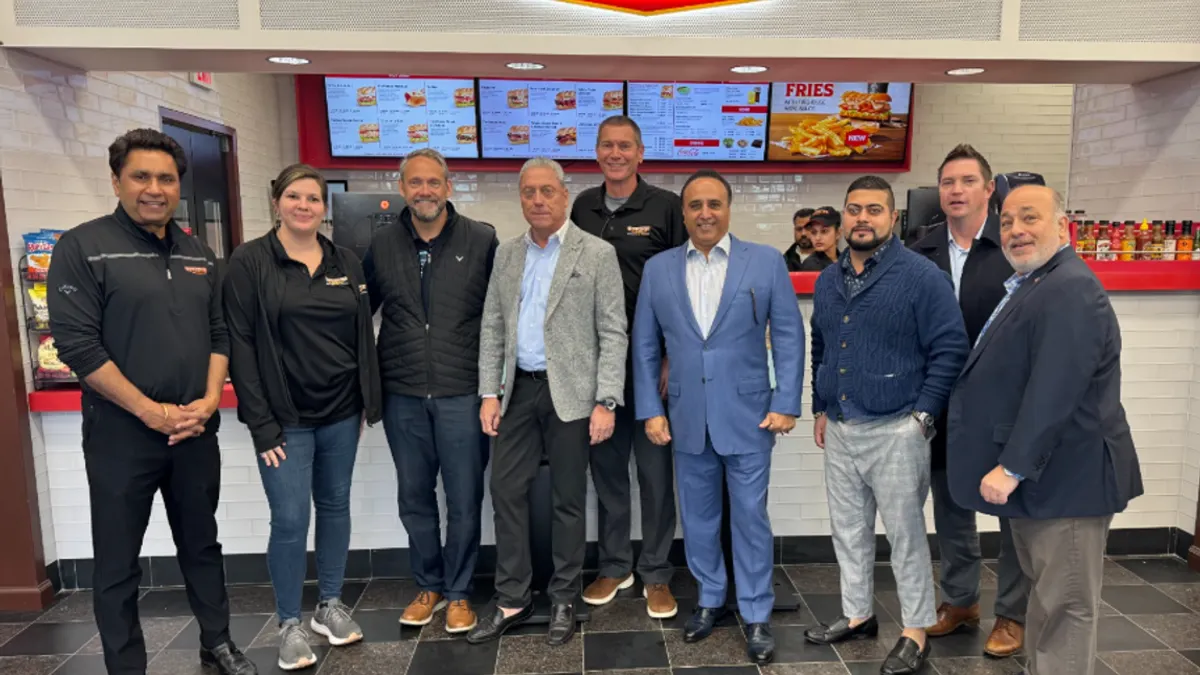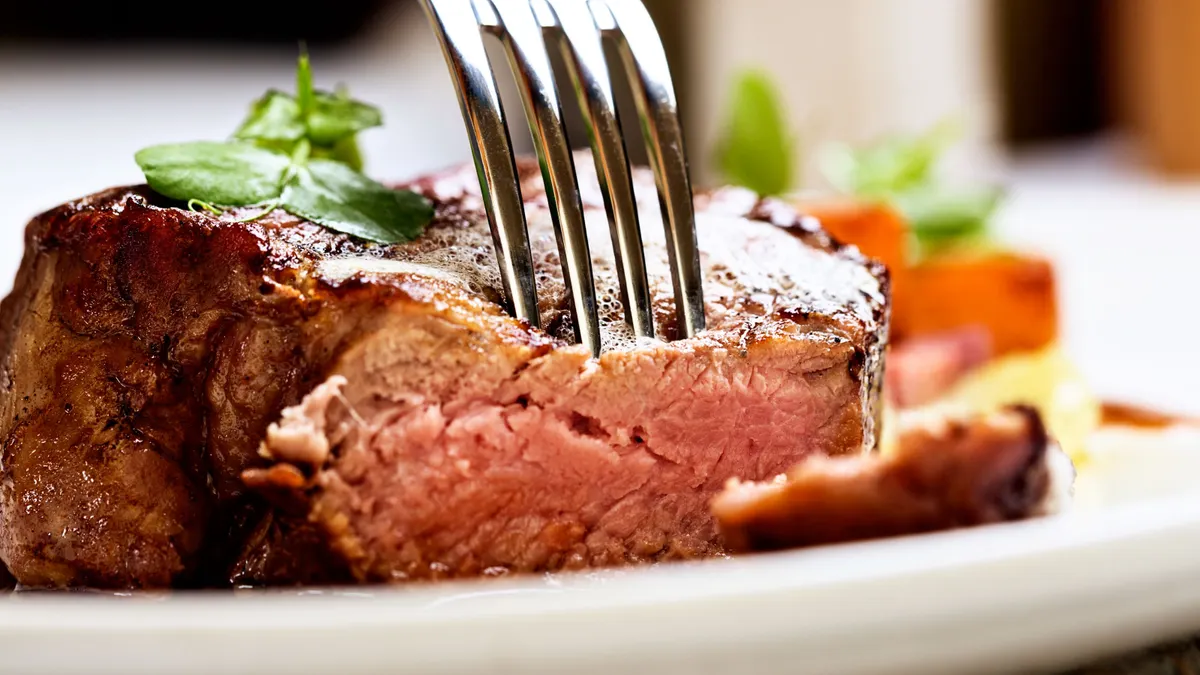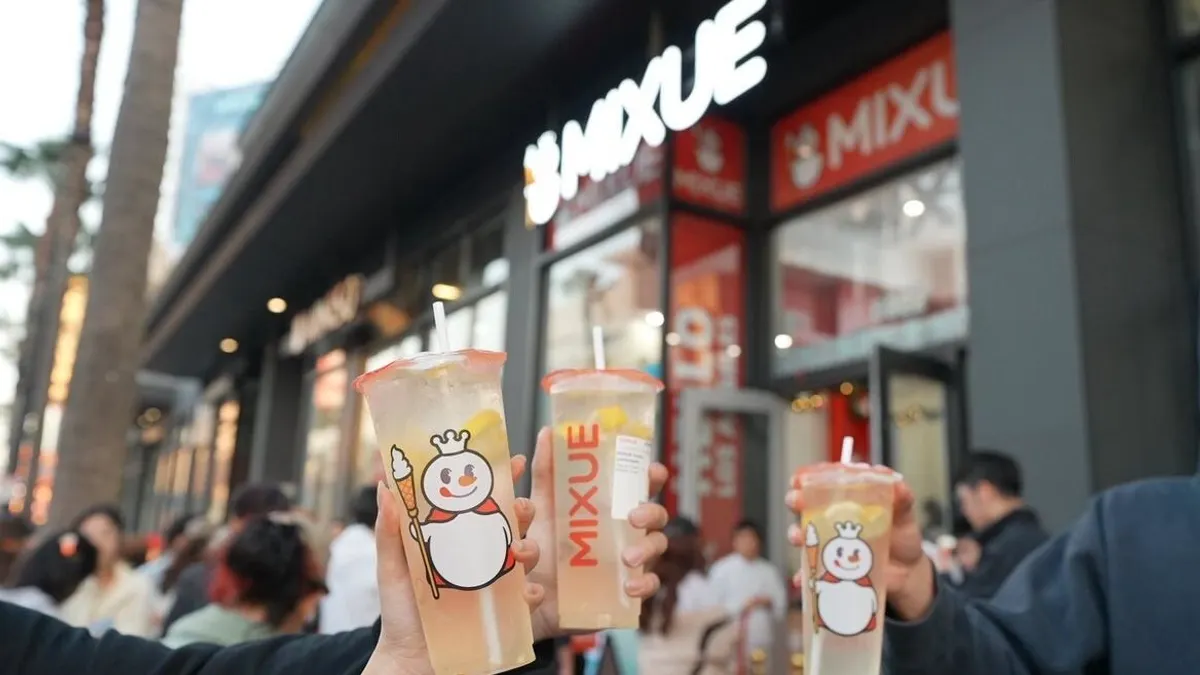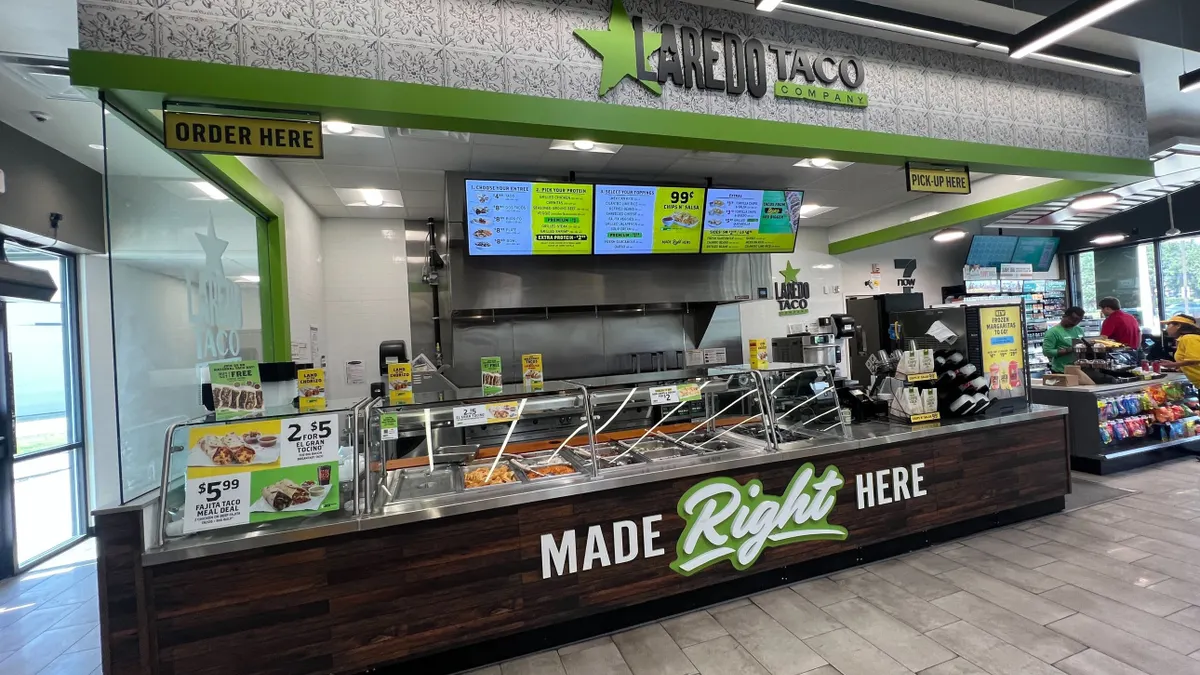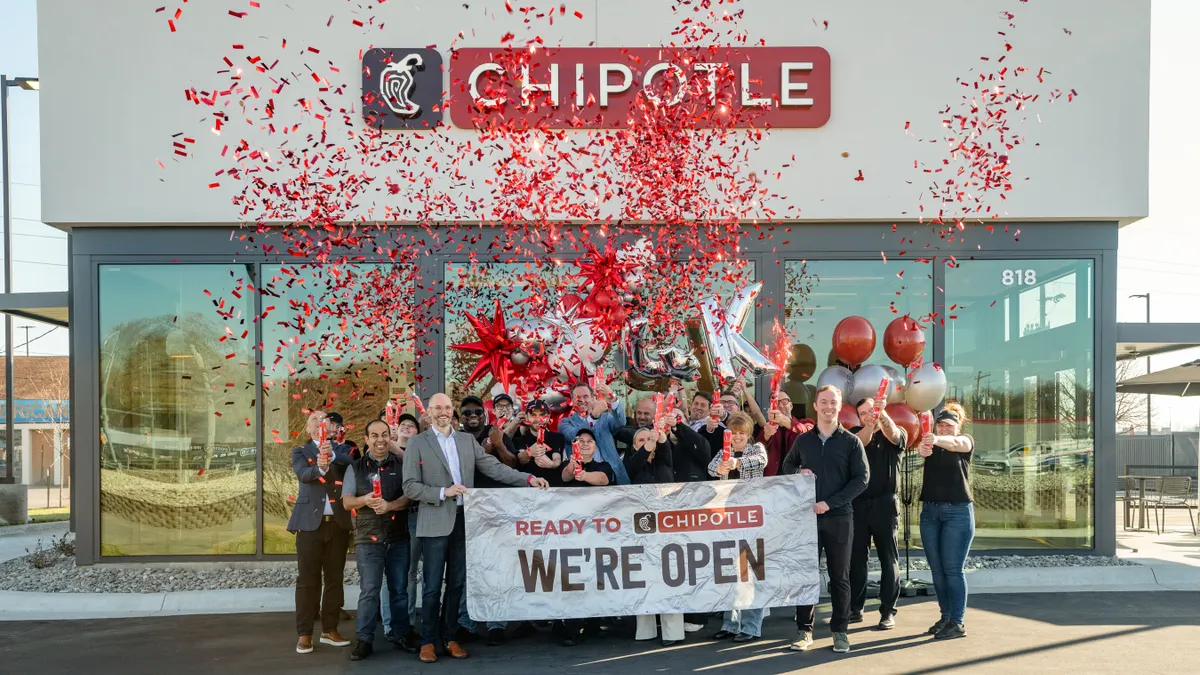When eatsa opened its first restaurant in 2015, the founders simply "wanted to bring healthy vegetarian food to the masses," Jeff Spitulnik, eatsa's head of product, told Restaurant Dive. Over the next year, the company expanded to seven locations in California, New York City and Washington, D.C.
Four years later, however, eatsa looks more like a tech start-up, offering an automated platform that integrates kiosks, an app, a cubby order pickup system and digital menus. So what happened?
Part of eatsa's story is the classic restaurant mistake of expanding too fast, too soon, à la Taylor Gourmet. Today, only two of its vegetarian fast casual concepts remain, both in its home base of San Francisco.
The other part of the story, as Spitulnik tells it, grew from the founders' original idea to reduce costs operationally so they could put more money into the food quality.
"They did that with some great tech innovations, like the self-service experience so you can remove some of the labor from the equation," Spitulnik said. "You don't need cashiers, for example, or runners when consumers are self-serving with pre-ordering and with using kiosks and picking stuff up on their own." And so began its evolution.
At first glance, eatsa's shift from restaurant to tech company may seem unusual. But it's indicative of a larger trend in the industry where business is no longer just about the food, but about improving the whole customer experience — a shift driven by the digital age.
Restaurants today are inundated with new platforms promising to organize orders from every delivery service, ease the stress behind scheduling and recruiting, automate bookkeeping, make ordering faster, track customer history, and the list continues. And it appears restaurants are trying them all. According to a 2018 Hospitality Technology study, 58% of operators used more than 10 systems, while 12% reported using over 30 technologies in their daily operations.
"For a small company trying to do some innovations, it's hard to have a split brain. We could have … continued pursuing the restaurant track, but it became more important for us to focus on B2B, especially as digital starts becoming more mainstream in restaurants."

Jeff Spitulnik
Head of product, eatsa
Instead of installing numerous systems, however, eatsa worked to develop its own proprietary platform aimed at creating more efficiencies in its operations. A key aspect is data collection to help restaurants do predictive modeling for labor, as well as identify consumer trends and behaviors. Expertise comes from chairman David Friedberg, a data scientist who once drove Monsanto’s data science research team.
After implementing its own system, other restaurants became interested in eatsa's technology.
"For a small company trying to do some innovations, it's hard to have a split brain," Spitulnik said. "We could have … continued pursuing the restaurant track, but it became more important for us to focus on B2B, especially as digital starts becoming more mainstream in restaurants."
The mission change fits eatsa's culture, but what if a restaurant wants to be just that — a restaurant? How can a business strategically leverage the benefits of technology without overdoing it?
Exercising controlled chaos
As third-party delivery boomed, Chicago-based fast casual Roti Modern Mediterranean struggled to find a solution to streamline digital ordering, which is its fastest growing, but most complex channel, according to the chain's vice president of technology Jeff Miller.
"We were trying multiple different things. We were trying to create organization around the third-party tablets. We tried to unify all the third party … for our team members in a consistent way," he told Restaurant Dive. "Nothing really solved the challenge for us. It was creating a lot of stress for our team … That complexity for us was really taking away from our core pillars, which are around our food, experience and people. Roti isn't unique here."
And Miller's right. Roti isn’t unique. According to an NPD Group report, digital ordering has increased each year since 2013 and is expected to triple by 2020. Those numbers bode well for bottom lines, but only if restaurants can create an organized system that can manage the influx without detracting from the customer experience.
However, the current solution for many like Roti — a tablet for everyone — isn't sustainable. Reuters reported that independent restaurants Proposition Chicken and Presidio Pizza Company in San Francisco felt they had too many systems to process orders coming in from consumer phone calls and delivery platforms like Uber Eats. Restaurant Hospitality also told the story of Canter’s Deli in Los Angeles, which had at least a dozen devices to contend with.
"Our digital line is, 'Exercising controlled chaos.' Eatsa was selected because it helped us remove that chaos and let us capture customer orders from anywhere, whether that was our app, the web or third-party delivery. It allowed us to create a single process."

Jeff Miller
Vice president of technology, Roti Mediterranean Grill
But for restaurants these days, it's fight or flight when it comes to the delivery game. "We had three choices. We could run away from it. We could just ignore it and let it happen to us or we could try and lean in and try and do something differently about it," Miller said. The company talked to a few companies about solutions to simplify and modernize their operations. No more juggling numerous iPads or toggling through tabs. The Mediterranean chain wanted simplicity and modernization.
"Our digital line is, 'Exercising controlled chaos.'" said Miller. "Eatsa was selected because it helped us remove that chaos and let us capture customer orders from anywhere, whether that was our app, the web or third-party delivery. It allowed us to create a single process."
Broadening the conversation
Eatsa isn't the only startup to veer from a food-first business. Yumpingo launched in the U.K. in 2016, after CEO and founder Gary Goodman was talking to a restaurateur about what innovations he thought would help him do his job better. According to Dan Dillon, VP of U.S. operations, the man said, "I always loved comic books as a kid. What I would love most is to see the thought bubbles above people's heads to understand what they’re thinking when they’re in my restaurant."
Eventually that idea grew from three guys in a garage tinkering with a project, into a tech platform that helped restaurants gather customer input to help develop their latest menu innovations. Yumpingo, however, evolved to try to tackle growing demand for restaurants to offer more than just food, but a full experience.
"The original tagline of the company was 'More Food You Love'. It was focused so much on menu development," Dillon said. "Now I think it's an expectation that it isn't just a transaction of selling food the guest is going to enjoy. It's about broadening the conversation."
Today Yumpingo works with restaurants, including TGI Fridays and Uno Pizzeria & Grill, to create a 1-minute survey given to diners when they receive their digital bill. Other than an overall satisfaction benchmark, the questions are tailored to the needs of the establishment, from music to atmosphere, pace of experience to steps of service. That information is recorded and presented in a dashboard to help managers identify any issues and enact changes.
"We know that a general manager of a restaurant isn't an analyst," Dillon said. "That’s not their forte, nor should it be. We don't want general managers spending their time at a desk. We want them on the floor, managing the restaurants."
And that's what technology should do — improve the customer experience, whether you are using one or 30 platforms. "We want to close the loop on the digital journey. Use that touchpoint as an opportunity to expand that relationship," said eatsa's Spitulnik. "There's a lot of tech out there in restaurants and lots of it not providing much value."






